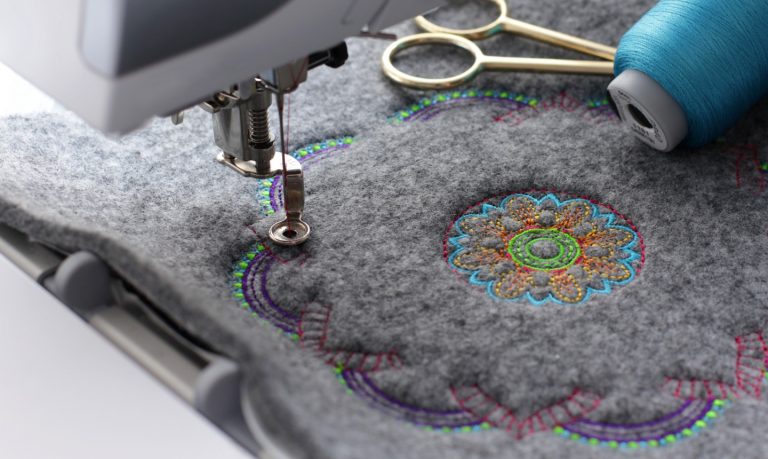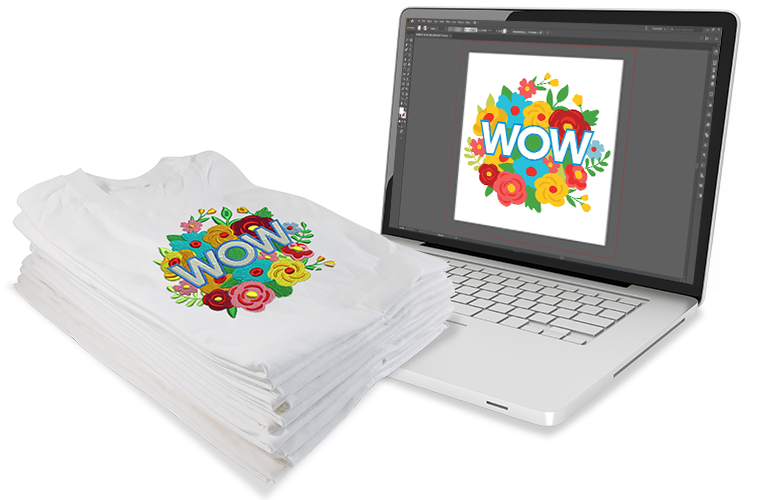Reliable Digitizing for Embroidery: Trusted by Experts
Reliable Digitizing for Embroidery: Trusted by Experts
Blog Article
Streamlining the Art of Needlework Digitizing: Step-by-Step Guide
Embroidery digitizing is a meticulous craft that requires accuracy and creative thinking. As modern technology continues to breakthrough, the digitization process has actually come to be a lot more obtainable, enabling fanatics to bring their intricate styles to life with convenience. In this guide, we will certainly untangle the complexities of embroidery digitizing, breaking down each step methodically to enhance the procedure and equip both newbies and skilled embroiderers alike. Stay tuned to discover just how you can streamline this intricate art kind and transform your creative visions into perfectly embroidered work of arts.
Comprehending Embroidery Digitizing Software
Embroidery digitizing software application works as a critical tool for transforming elaborate layouts right into digital formats compatible with needlework devices, promoting specific stitching and personalization. This customized software permits customers to import various picture documents styles, such as JPG or PNG, and transform them into embroidery machine-readable styles like DST, EXP, or PES - Digitizing for Embroidery. By making use of attributes like stitch modifying, rug choices, and string color option, digitizing software enables users to regulate every element of the design procedure
Additionally, advanced embroidery digitizing software program offers tools for creating complicated styles, changing stitch thickness, and integrating elaborate details. Individuals can likewise sneak peek the design before sewing it out, making sure precision and lessening mistakes. Furthermore, lots of software application provide automatic attributes that aid simplify the digitizing process, conserving effort and time.
Comprehending the abilities of embroidery digitizing software program is crucial for attaining high-grade cause needlework projects. By grasping this tool, needlework enthusiasts and professionals can release their imagination and bring complex styles to life with precision and effectiveness.

Choosing the Right Design File
After acquainting yourself with the capacities of needlework digitizing software, the following crucial step in the process is picking the best design declare your project. Digitizing for Embroidery. When picking a design file for embroidery digitizing, it's vital to take into consideration the complexity of the design, the dimension of the end product, and the type of textile you will be collaborating with
For elaborate layouts with fine details, a high-resolution image or vector data is advised to guarantee that the needlework device can accurately duplicate the layout. Furthermore, the dimension of the final item plays a considerable duty in choosing the appropriate design file. Bigger styles might require higher resolution data to maintain quality and sharpness.
In addition, the type of textile you will be stitching on influences the choice of style file. Various materials might require adjustments in the style file to make certain that the stitches are appropriately straightened and the style looks like meant. By carefully choosing the appropriate design data based on these elements, you can set on your own up for a successful needlework digitizing procedure.
Digitizing Tools and Techniques
Using specialized software application and accuracy techniques, digitizing devices are vital in changing intricate layouts into embroidery-ready files. Embroidery digitizing software program, such as Wilcom, Hatch, or Embrilliance, offers the needed system to convert artwork into stitch information. These programs offer features like stitch modifying, rug options, and lettering tools to make sure the design converts perfectly onto textile.
One of the essential strategies in digitizing is creating a clear course for the needlework maker to adhere to. This involves digitizing each aspect of the design with accuracy, establishing stitch kinds, densities, and instructions. By making use of devices like digitizing tablet computers or software-specific plugins, embroiderers can attain a high level of accuracy in their digitized styles.
In addition, mastering the art of rug stitching is article essential for generating quality embroidery. Underlay stitching stabilizes the fabric and creates a structure for the style, making sure that the last product is both visually attractive and lasting. By comprehending these digitizing devices and techniques, embroiderers can raise their craft and bring elaborate designs to life with accuracy and effectiveness.
Tailoring Stitch Kinds and Instructions
Having established a foundation in digitizing devices and methods, an essential facet ahead of time embroidery craftsmanship lies in personalizing stitch types and directions with accuracy and purpose. The choice of stitch kinds can significantly affect the total look and texture of the embroidered design. Satin stitches, understood for their smooth and glossy finish, job well for developing borders and text. On the other hand, fill stitches are suitable for covering larger areas effectively. By purposefully combining these stitch kinds, embroiderers can read here attain deepness and dimension in their designs.
In addition, the direction of stitches plays a vital duty in boosting the visual appeal of the last embroidery. Varying stitch directions can include texture, emphasize certain components, and create aesthetic rate of interest. Altering the angle of stitches can replicate motion or natural patterns like hair or feathers. By trying out different stitch angles and patterns, embroiderers can bring their styles to life with amazing detail and ins and out. Understanding the art of customizing stitch kinds and instructions equips embroiderers to unleash their imagination and boost the quality of their job.
Screening and Refining Your Digitized Design
To ensure the precision and quality of your digitized design, extensive screening and refinement are essential action in the embroidery digitizing description process. As soon as you have actually finished the digitization of your style, it is critical to test it before continuing with the actual embroidery. Testing allows you to recognize any type of potential problems such as string breaks, stitch density troubles, or design distortions that might affect the outcome.

After screening, it is necessary to improve your digitized design based upon the feedback from the examination sew-out. This might include tweaking stitch setups, changing thickness, or making adjustments to the total design to accomplish the preferred outcome. By iterating via screening and refinement, you can tweak your digitized design to excellence prior to relocating onward with the actual needlework process.
Verdict
To conclude, grasping the art of needlework digitizing requires a complete understanding of the software program, picking the appropriate design documents, using digitizing tools and methods, personalizing stitch kinds and directions, and testing and improving the digitized layout. By complying with these steps, embroiderers can streamline the digitizing process and produce premium stitched styles with accuracy and performance.
Report this page